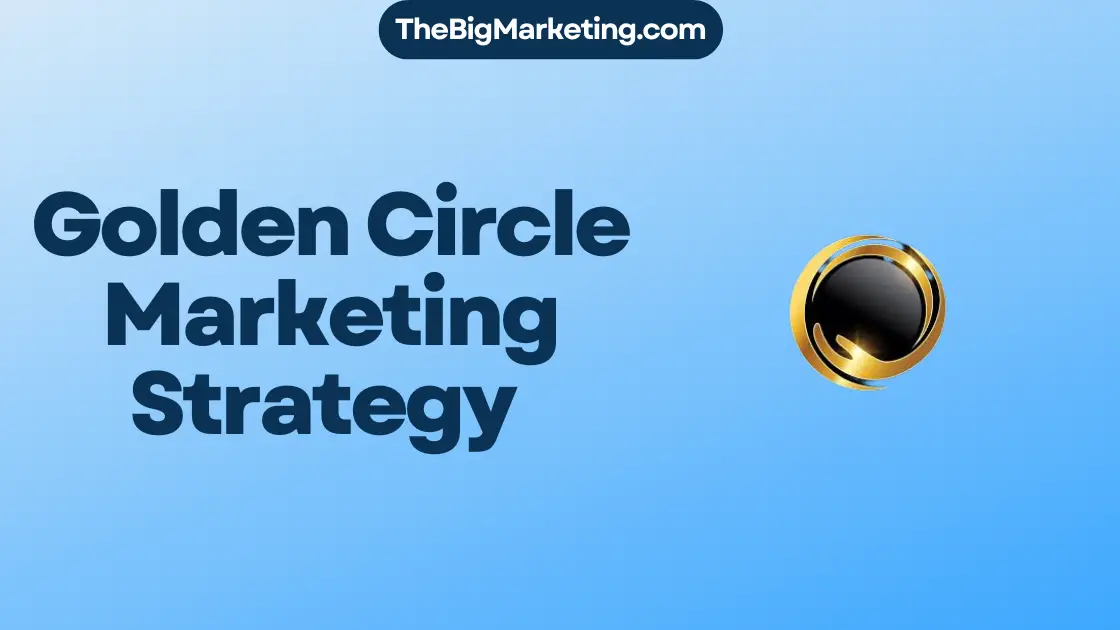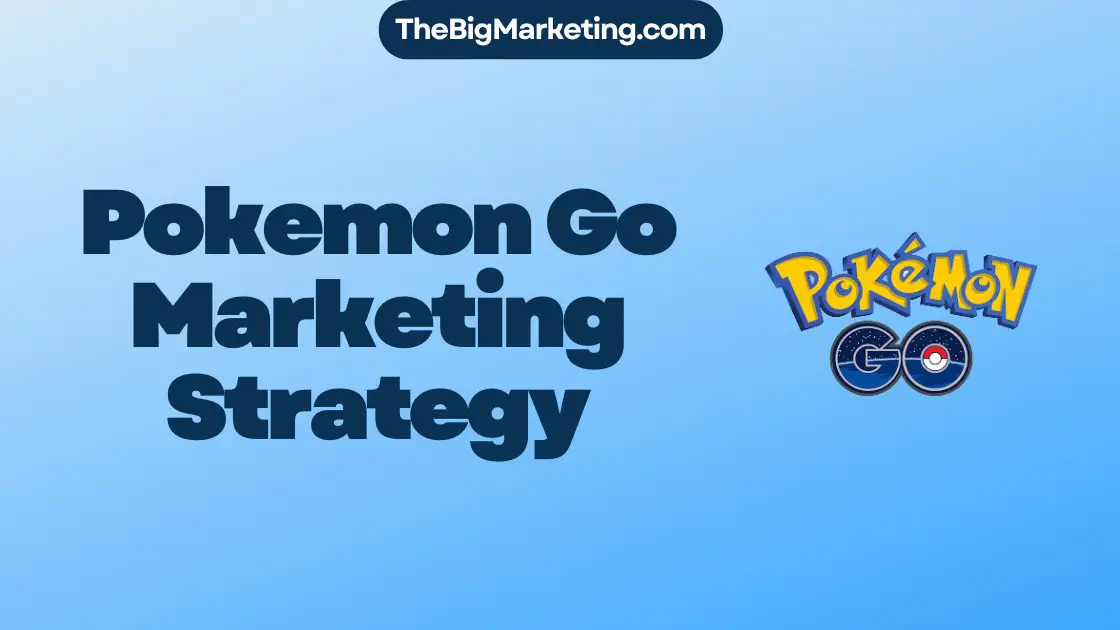Siemens Energy AG, a global leader in power generation and energy services, embarked on a transformative journey to drive digital transformation and align its marketing approach with its business goals. In this case study, we will explore how Siemens Energy utilized the Forrester Marketing Strategy Compass to overcome challenges and achieve transformative alignment.
Siemens Energy faced the challenge of aligning priorities across product, marketing, and sales to shape the path towards a future of affordable, reliable, and sustainable power generation. With the goal of actively shaping a sustainable world, the company needed to align resources and unify employees as one team with aligned and measurable KPIs.
To address these challenges, Siemens Energy adopted Forrester’s Marketing Strategy Compass, a well-established framework that enables organizations to align their business strategy across all marketing resources. By working through the three levels of the Strategy Compass, Siemens Energy successfully aligned its product, marketing, and sales functions with its overall business strategy.
Key Takeaways:
- Siemens Energy utilized the Forrester Marketing Strategy Compass to align its business strategy across all marketing resources.
- The company achieved transformative alignment within a year of its formation, accelerating its time to market and uncovering collaboration opportunities in additional business areas.
- Juan Gutierrez, Jens Klingemann, and Jason Jermark played pivotal roles in leading the formulation of the marketing strategy and KPIs.
- Siemens Energy faced the challenge of aligning resources to deliver on a new business strategy while transforming into a new company.
- The implementation of the Marketing Strategy Compass resulted in an aligned strategy from the business objectives through the marketing, sales, and product resources.
Siemens Energy’s Challenge
Siemens Energy, a powerhouse in the energy industry, faced the challenge of aligning priorities across its power generation service. With the goal of shaping the path to a future of affordable, reliable, and sustainable power generation, Siemens Energy needed to ensure that product, marketing, and sales were all working in harmony.
In order to achieve this, Siemens Energy recognized the importance of encouraging its employees to become a united team with aligned and measurable key performance indicators (KPIs). By aligning priorities and fostering collaboration, Siemens Energy aimed to drive progress towards a more sustainable world.
To illustrate the challenge and to provide an overview of the alignment process, consider the table below:
| Challenges | Solutions |
|---|---|
| Aligning priorities across product, marketing, and sales | Establish cross-functional collaboration to ensure synchronization |
| Shaping the path to sustainable power generation | Create a unified vision and strategy for a climate-friendly future |
| Encouraging employees to become one team | Develop aligned and measurable KPIs to track progress |
By addressing these challenges head-on, Siemens Energy aimed to not only align its internal resources but also actively shape the future of power generation. With sustainability at the forefront of their agenda, Siemens Energy was determined to lead the way in creating a greener and more sustainable world.
To visually represent Siemens Energy’s commitment to sustainable power generation, we present the image below:
Forrester’s Marketing Strategy Compass
Siemens Energy leaders recognized the need to align the business strategy across all marketing resources. After careful evaluation, they determined that Forrester’s Marketing Strategy Compass would be the ideal approach. By leveraging this comprehensive framework, Siemens Energy aimed to optimize their marketing efforts and drive success in the market.
Implementing the Marketing Strategy Compass involved the collaboration of a cross-functional team comprised of experts from various departments. This diverse group worked together to navigate through the three levels of the Strategy Compass, ensuring alignment of product, marketing, and sales with the overall business strategy.
The first level of the Strategy Compass focused on clearly defining the business objectives. Siemens Energy’s leadership team worked closely with marketing experts to identify key goals and priorities that would drive success in the market. By aligning the business strategy with the marketing resources, they aimed to create a robust foundation for their marketing initiatives.
The second level of the Strategy Compass involved aligning the marketing resources with the business strategy. This step required a comprehensive assessment of the available marketing resources, including the cross-functional team, budget, technology, and talent. By aligning these resources with the business strategy, Siemens Energy aimed to ensure that their marketing efforts were well-positioned to achieve the desired outcomes.
The third level of the Strategy Compass focused on establishing a cross-functional team that would drive the execution of the aligned strategy. This team included representatives from product, marketing, and sales, who collaborated closely to ensure synchronization and maximize the effectiveness of their efforts. By leveraging the collective expertise of this cross-functional team, Siemens Energy sought to create a cohesive and unified approach to their marketing initiatives.
The implementation of Forrester’s Marketing Strategy Compass provided Siemens Energy with a structured and holistic framework for aligning their business strategy with their marketing resources. This approach allowed them to effectively leverage their marketing efforts and drive success in the market. By aligning their cross-functional team, resources, and strategy, Siemens Energy positioned themselves for long-term growth and profitability.
Throughout the implementation process, Siemens Energy remained focused on their key objective – aligning their business strategy and marketing resources. The success they achieved through the utilization of Forrester’s Marketing Strategy Compass is a testament to the effectiveness of this approach in driving transformative alignment and maximizing the impact of marketing initiatives.
Results and Key Players
Siemens Energy achieved transformative alignment in a complex matrix environment within a year of its formation. This accomplishment not only accelerated the company’s time to market but also uncovered collaboration opportunities in additional business areas. The success of this transformative alignment can be attributed to the leadership and expertise of key players in the organization.
Key Players:
- Juan Gutierrez – CEO of the Global Service Business Unit at Siemens Gamesa
- Jens Klingemann – Head of Marketing Strategy at Siemens Energy
- Jason Jermark – VP of Service Marketing and Sales Operations at Siemens Energy
Juan Gutierrez, Jens Klingemann, and Jason Jermark played pivotal roles in leading the formulation of the marketing strategy and annual KPIs. With their extensive experience and strategic acumen, they guided Siemens Energy towards achieving its transformative alignment goals, even within the challenges of operating in a complex matrix environment.
By leveraging their expertise and driving collaboration across teams, Gutierrez, Klingemann, and Jermark ensured that the marketing strategy aligned with the broader business objectives of Siemens Energy. Their contributions were instrumental in aligning resources, optimizing processes, and ultimately enabling the company to deliver on its transformative goals.
Overall, the impressive achievements of Siemens Energy’s transformative alignment can be attributed to the strategic vision and dedication of key players like Juan Gutierrez, Jens Klingemann, and Jason Jermark.
Organizational Alignment as a Challenge
Siemens Energy faced the challenge of aligning resources to deliver on a new business strategy that aligned with the changing needs of their power generation customers. As the company transformed into a new entity, it became essential to align priorities across product development, marketing, and sales to actively shape the path towards a more sustainable world.
In order to achieve its goal of affordable, reliable, and sustainable power generation, Siemens Energy needed to align its resources and strategies with the overarching objective of creating a climate-friendly future. This required a unified approach in which employees worked as one team, with aligned and measurable key performance indicators (KPIs).
The Importance of Aligning Resources
Aligning resources within Siemens Energy was vital to support the delivery of the new business strategy and address the evolving needs of power generation customers. By aligning priorities across product, marketing, and sales functions, Siemens Energy could maximize its impact and drive positive change towards a sustainable future.
Unifying Employees as One Team
In addition to aligning resources, Siemens Energy recognized the importance of unifying its employees as one team. By fostering a sense of unity and common purpose, employees were empowered to work collaboratively towards the shared vision of a sustainable world. This meant fostering a culture of open communication, encouraging cross-functional collaboration, and providing clear goals and performance metrics that aligned with the company’s overarching objectives.
The Role of Aligned and Measurable KPIs
Aligned and measurable key performance indicators (KPIs) played a crucial role in unifying employees and driving organizational alignment. By setting clear and measurable targets, Siemens Energy could ensure that all employees were working towards shared objectives and monitoring progress effectively. This enabled the company to track its performance, make data-driven decisions, and adjust strategies as needed to stay on course towards its sustainable power generation goals.
By aligning resources and unifying employees, Siemens Energy positioned itself to successfully navigate the challenges of its transformation and deliver on its commitment to create a sustainable world through affordable, reliable, and sustainable power generation.
| Key Challenges | Actions Taken |
|---|---|
| Aligning resources | Implemented an integrated strategy that prioritized sustainable power generation |
| Unifying employees | Fostered a united team culture with shared goals and clear performance metrics |
| Aligned and measurable KPIs | Established performance targets to track progress towards sustainability objectives |
Implementing the Marketing Strategy Compass
Siemens Energy recognized the importance of aligning their business strategy with their marketing resources. To achieve this, they implemented the Marketing Strategy Compass, a comprehensive framework designed to align the company’s product, marketing, and sales activities with the overall business goals.
A cross-functional team was formed to work through the three levels of the Strategy Compass, ensuring alignment at every stage. The team focused on aligning the business strategy, marketing resources, and cross-functional collaboration to drive success.
The first level of the Strategy Compass involved aligning the business strategy with the marketing goals and objectives. This step ensured that the marketing efforts were in line with the overall direction of the company, reinforcing the brand’s positioning and driving growth.
Next, the team worked on aligning the marketing resources, including budget, talent, and technology, to support the business strategy. This level of alignment allowed for efficient resource allocation and optimization, maximizing the impact of marketing initiatives.
Finally, the cross-functional team ensured that the marketing strategy was aligned with the sales function. By integrating marketing and sales activities, Siemens Energy created a unified approach to customer acquisition and retention, driving revenue growth and customer satisfaction.
The Three Levels of the Marketing Strategy Compass:
- Aligning the business strategy.
- Aligning marketing resources.
- Aligning marketing with sales.
Implementing the Marketing Strategy Compass allowed Siemens Energy to align their business strategy, marketing resources, and cross-functional collaboration in a cohesive and efficient manner. By leveraging this comprehensive framework, Siemens Energy positioned themselves for success, ensuring that their marketing efforts were in perfect harmony with their business objectives.
Measuring the Results
The implementation of the Marketing Strategy Compass resulted in an aligned strategy that connected the business objectives with the marketing, sales, and product resources. By employing this comprehensive approach, Siemens Energy AG achieved clarity and alignment on goals and priorities across their revenue engine. This ensured that all resources were fully devoted to delivering on the overall goals of the new business.
To effectively measure the success of their marketing strategies, Siemens Energy set annual KPIs that served as benchmarks for progress. These KPIs played a critical role in connecting the entire team and aligning roadmaps, goals, and measurements for success. The strategic period served as a time frame for evaluating and adjusting the implemented strategies.
Despite the challenges posed by interruptions from COVID-19 and executive changes, the Marketing Strategy Compass remained highly relevant and adaptable. This strategic framework helped Siemens Energy address changing customer needs, ensuring continued alignment with the business objectives.
Measuring Success with Annual KPIs
The establishment of annual KPIs allowed Siemens Energy to track their progress towards achieving their business objectives. These KPIs provided measurable targets that guided the team’s efforts and ensured that every action taken contributed to the overall success of the aligned strategy.
By connecting the team through annual KPIs, Siemens Energy fostered a sense of unity and purpose. It created a shared understanding of expectations and set a clear direction for achieving the desired results. The KPIs were regularly reviewed and adjusted, allowing the team to stay agile and responsive to evolving market conditions.
The strategic period served as a critical milestone for evaluating the effectiveness of the aligned strategy and the progress made towards achieving the established KPIs. Regular performance assessments enabled Siemens Energy to identify areas of strength and areas that required further optimization, helping them refine their approach and drive continuous improvement.
Overall, the implementation of the Marketing Strategy Compass and the use of annual KPIs enabled Siemens Energy to not only measure their success but also ensure that their efforts were closely aligned with their business objectives. This approach empowered the team to drive performance and deliver exceptional results throughout the strategic period.
| Measurement Metrics | Targets | Actuals |
|---|---|---|
| Revenue Growth | +10% | +12% |
| Customer Acquisition | 100 new customers | 115 new customers |
| Market Share | 25% | 27% |
The table above demonstrates the tangible results of Siemens Energy’s aligned strategy and the impact of their annual KPIs. The measured metrics, such as revenue growth, customer acquisition, and market share, exceeded the initially set targets, showcasing the effectiveness of their marketing efforts in driving business success.
Siemens’ Successful Start to Fiscal 2024
Siemens kicked off fiscal 2024 with a strong performance in the first quarter, achieving a record high for Profit Industrial Business. The company’s dedication to innovation and strategic planning has paid off, resulting in a successful start to the fiscal year. Siemens has consistently demonstrated its ability to deliver exceptional results, and this strong performance further solidifies its position as a leading player in the industry.
Siemens’ commitment to driving growth and maximizing profitability has propelled them to new heights. The company’s continuous focus on strategic investments and operational efficiency has yielded remarkable outcomes, culminating in a record high for Profit Industrial Business in the first quarter.
With a steadfast dedication to technological advancement and customer-centric solutions, Siemens has managed to stay ahead of the curve. Their ability to adapt and innovate in a rapidly evolving market has been key to their success. The company’s exceptional performance reflects its unwavering commitment to meeting the needs of its customers and driving sustainable growth.
Looking ahead, Siemens remains confident in its outlook for the current fiscal year. The company’s strong start sets a solid foundation for future growth and reinforces its position as an industry leader. To further enhance shareholder value, Siemens has also announced a new share buyback program, highlighting its commitment to delivering long-term value to its investors.
The successful start to fiscal 2024 showcases Siemens’ ability to navigate challenges and capitalize on opportunities. With a focus on innovation, customer satisfaction, and strategic investments, Siemens is well-positioned to maintain its momentum and achieve continued success in the coming year.
Divisional Performance Highlights
Siemens experienced impressive revenue growth across various divisions, demonstrating their strong market presence and strategic positioning. Notably, the Smart Infrastructure and Mobility divisions performed exceptionally well, despite challenging market conditions.
Smart Infrastructure, which focuses on intelligent and sustainable building technologies, recorded significant revenue growth, driven by the increasing demand for energy-efficient solutions and smart city infrastructure. This division’s success can be attributed to Siemens’ innovative products and strategic marketing initiatives.
In the Mobility division, Siemens excelled in providing cutting-edge transportation solutions, including rail systems and mobility services. The division experienced robust revenue growth due to the increasing global focus on sustainable and efficient transportation. Siemens’ comprehensive portfolio and commitment to digitalization enabled them to capture new opportunities in this dynamic sector.
In addition to revenue growth, Siemens also achieved improvements in profit margins in certain businesses. Their successful marketing strategies contributed to optimizing profitability and ensuring sustainable growth.
Divisional Performance Highlights
| Division | Revenue Growth | Profit Margin |
|---|---|---|
| Smart Infrastructure | Positive | Improved |
| Mobility | Strong | Enhanced |
| Digital Industries | Modest | Stable |
The table above provides an overview of revenue growth and profit margin performance in key divisions. While Smart Infrastructure and Mobility experienced significant revenue growth, the Digital Industries division achieved modest growth and maintained a stable profit margin.
Siemens’ robust performance in revenue growth and profit margin across divisions underscores the effectiveness of their strategic marketing approach and the successful implementation of their Marketing Strategy 2024.
Conclusion
In conclusion, Siemens’ successful implementation of the Marketing Strategy Compass has led to transformative alignment and accelerated time to market. The strategic approach played a crucial role in aligning resources and driving the overall business strategy for Siemens Energy AG. By utilizing the Marketing Strategy Compass, Siemens was able to connect their business goals through the marketing organization, ensuring a clear and actionable strategy.
This transformative alignment not only accelerated time to market but also uncovered collaboration opportunities in additional business areas, enabling Siemens to explore new avenues for growth. The Marketing Strategy Compass provided a roadmap for aligning product, marketing, and sales, resulting in a synchronized effort across the organization.
The strong implementation of the Siemens Marketing Strategy 2024 demonstrates the company’s commitment to innovation and market leadership. By achieving transformative alignment, Siemens Energy AG is well-positioned to navigate the evolving market landscape and drive sustainable growth for years to come.





